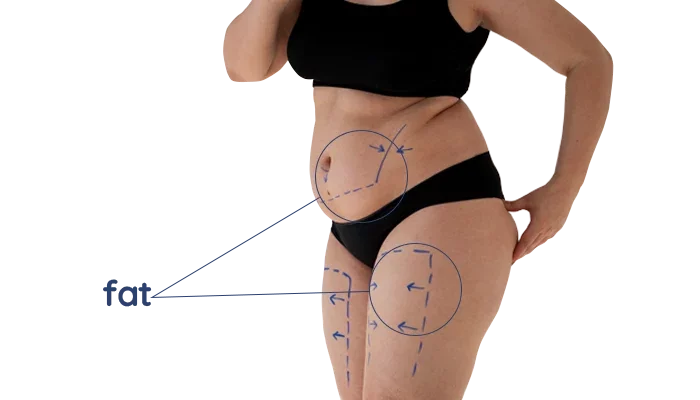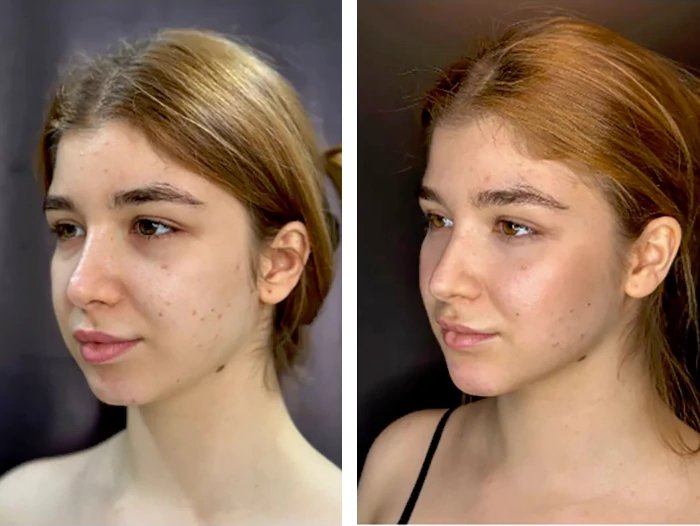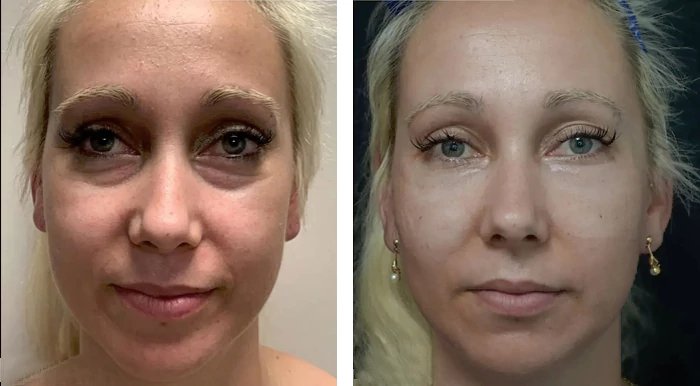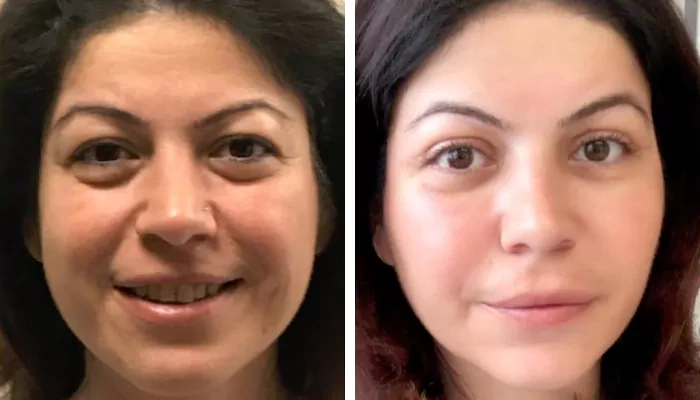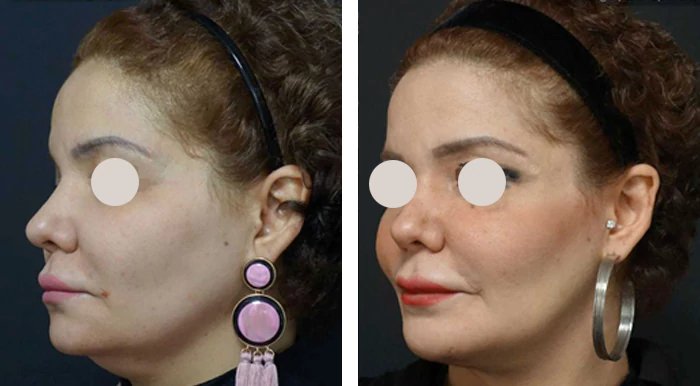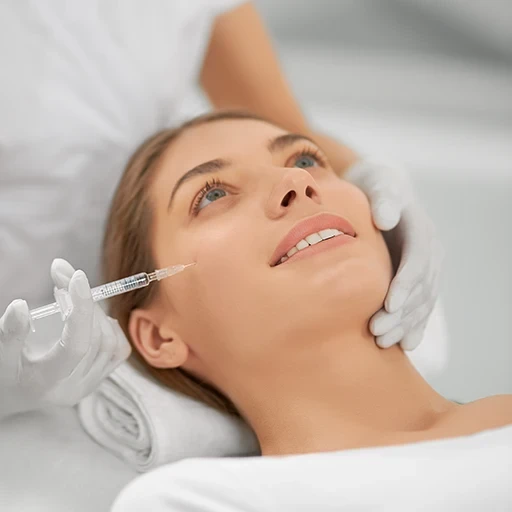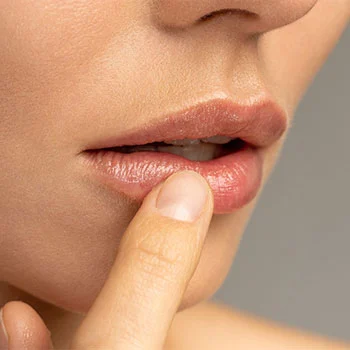What is fat transfer?
Fat transfer, also known by various other names such as fat grafting, fat injection, autologous fat transfer, lipofilling, lipotransfer, lipomodeling, and adipose tissue transfer, is a cosmetic procedure that involves harvesting fat from one part of the body (such as the abdomen or thighs) through liposuction and injecting it into another area that may lack volume or require enhancement (such as the face, breasts, or buttocks). This procedure is commonly used to restore volume, improve contours, and rejuvenate different areas of the body.
Fat transfer is considered a safe and effective technique for cosmetic enhancement, as it uses the patient's own fat cells, reducing the risk of rejection or allergic reactions. The results of fat transfer are often long-lasting, with the potential for some of the transferred fat cells to establish a blood supply and survive in the new location.
What are the benefits of fat grafting?
Fat grafting offers several benefits for individuals seeking cosmetic enhancement or reconstructive procedures. Some of the key benefits of fat transfer include:
- Natural results: Fat grafting uses the patient's own fat cells, leading to natural-looking results that seamlessly integrate with the surrounding tissues.
- Volume restoration: Fat transfer can restore volume to areas of the body that have lost fat due to aging, weight loss, or other factors, such as the face, breasts, hands, or buttocks.
- Long-lasting results: Transferred fat cells that establish a blood supply in the new location can survive for a long time, providing lasting results for enhanced contours.
- Versatility: Fat grafting can be used for various cosmetic procedures, including facial rejuvenation, breast augmentation, buttock augmentation, and hand rejuvenation.
- Minimally invasive: Fat transfer is a minimally invasive procedure that typically involves minimal scarring and a shorter recovery period compared to traditional surgical methods.
- Dual benefit: In addition to enhancing a specific area of the body, liposuction used for fat harvesting can also contour and slim down the donor site.
- Reduced risk of allergic reactions: Since the fat used in the procedure is sourced from the patient's body, there is a reduced risk of allergic reactions or rejection.
Overall, fat grafting is a safe and effective technique for achieving natural-looking results and addressing volume loss or contour irregularities in various areas of the body.
Common areas that can be improved with fat transfer
Fat grafting can be used to enhance and improve various areas of the body. Some of the common areas that can be improved with fat transfer include:
- Breasts: Fat transfer to the breasts, also known as natural breast augmentation, can increase breast size, improve symmetry, and enhance breast shape without the need for implants.
- Buttocks: Fat transfer to the buttocks, commonly known as the Brazilian Butt Lift, can add volume, improve shape and contour, and enhance overall buttock appearance.
- Face: Fat transfer can be used to enhance specific facial features, such as the cheeks, lips, chin, or temples, to achieve a more youthful and balanced facial appearance. Facial fat injection can restore volume, fill in wrinkles and lines, improve facial contours, and rejuvenate the overall appearance.
- Hands: Fat injection in the hands can rejuvenate the appearance of aging hands by restoring lost volume, minimizing the visibility of veins and tendons, and improving skin texture.
- Calves: Fat grafting to the calves, also known as calf augmentation, enhances their size, shape, and contour. This procedure is typically sought by individuals who desire fuller or more defined calf muscles to achieve a more proportionate and balanced lower body appearance.
- Scars: Fat injection can be used to improve the appearance of scars, including acne scars, surgical scars, or traumatic scars, by filling in depressions and creating a smoother skin surface.
- Contour irregularities: Fat grafting can be used to correct contour irregularities in various areas of the body, such as indentations or asymmetries resulting from previous surgeries, trauma, or congenital conditions.
Overall, fat transfer is a versatile cosmetic procedure that can be tailored to address specific concerns and improve the appearance of various areas of the body by restoring volume, enhancing contours, and rejuvenating the overall aesthetic.
Common areas where fat can be harvested (donor sites)
Fat transfer involves harvesting fat from one part of the body and transferring it to another area for cosmetic enhancement. Common donor sites for fat grafting include:
- Abdomen: The lower abdomen, especially the area around the belly button, is a popular donor site for fat grafting due to the presence of excess fat deposits.
- Thighs: The inner and outer thighs can serve as donor sites for fat transfer, particularly in the saddlebag area or along the thighs' contour.
- Flanks (love handles): The flanks, commonly referred to as love handles, are another common donor site for harvesting fat for transfer to other areas of the body.
- Hips: The hips, often known as the "muffin top" area, can provide an abundant source of fat for grafting procedures.
- Lower back: The lower back, above the buttocks, is another area where excess fat can be harvested for fat transfer procedures.
- Arms: The upper arms, particularly the area above the elbows, can be used as a donor site for fat injection to enhance other body areas.
- Back: The upper and middle back regions can also serve as donor sites for fat transfer, depending on the patient's specific needs and desired outcomes.
- Buttocks: In procedures such as the Brazilian Butt Lift, excess fat harvested from other areas of the body can be transferred to the buttocks for augmentation and enhancement.
These common donor sites provide plastic surgeons with ample sources of fat for fat grafting procedures, allowing for natural-looking and long-lasting results in various cosmetic enhancement treatments.
Who is fat transfer suitable for?
Fat transfer is a versatile cosmetic procedure that can benefit a wide range of individuals seeking aesthetic enhancement or reconstructive improvements. Fat injection may be suitable for individuals who:
- Desire volume enhancement: Individuals looking to restore lost volume, improve contours, or enhance specific areas of the body, such as the face, breasts, buttocks, hands, or calves.
- Prefer natural results: Those seeking natural-looking results using their body's own fat cells, which can integrate seamlessly with surrounding tissues and provide a more organic appearance.
- Require facial rejuvenation: Patients interested in facial rejuvenation to address volume loss, wrinkles, fine lines, or hollow areas on the face for a more youthful and refreshed appearance.
- Seek breast augmentation: Individuals considering breast augmentation but prefer a more subtle and natural enhancement without the use of implants.
- Want body contouring: Those looking to improve body contours, correct irregularities, or enhance specific features through targeted fat transfer procedures.
- Have realistic expectations: Individuals with realistic expectations regarding the outcomes of fat transfer, understanding that multiple sessions may be needed for optimal results and that some fat absorption may occur over time.
- Are in good health: Candidates who are in good overall health, do not smoke, and have realistic expectations about the procedure, recovery process, and potential risks involved.
- Prefer minimally invasive procedures: Patients who prefer minimally invasive procedures with shorter recovery times compared to traditional surgical methods.
Who are not good candidates for fat injection?
While fat transfer is a safe and effective procedure for many individuals seeking cosmetic enhancement, there are certain situations in which fat transfer may not be recommended. Individuals who fall into the following categories may not be suitable candidates for fat transfer:
- Insufficient donor fat: Individuals who do not have enough excess fat in donor areas for harvesting through liposuction may not be suitable candidates for fat transfer.
- Poor overall health: Individuals with underlying medical conditions that may increase the risk of complications during surgery or affect healing, such as uncontrolled diabetes, heart disease, or autoimmune disorders.
- Active infections: Individuals with active infections in the donor or recipient areas may need to postpone fat transfer until the infections are resolved to reduce the risk of complications.
- Smokers: Smoking can impair the body's ability to heal and increase the risk of complications, so individuals who smoke may be advised to quit or reduce smoking before undergoing fat transfer.
- Unrealistic expectations: Individuals with unrealistic expectations about the outcomes of fat transfer or those seeking dramatic changes that may not be achievable through the procedure.
- Recent weight loss: Individuals who have recently lost a significant amount of weight may not be ideal candidates for fat transfer, as fluctuations in weight can affect the long-term results of the procedure.
- Pregnant or breastfeeding women: Pregnant or breastfeeding women are typically advised to postpone elective cosmetic procedures, including fat transfer, until after pregnancy and breastfeeding to ensure the safety of both the mother and baby.
- History of poor wound healing: Individuals with a history of poor wound healing or scarring may not be suitable candidates for fat transfer, as the procedure involves creating small incisions for liposuction and fat injection.
It is crucial for individuals considering fat transfer to undergo a thorough consultation with a qualified plastic surgeon to assess their candidacy, discuss any contraindications, and determine the most appropriate treatment options based on their individual health status and cosmetic goals.
How is the procedure performed?
Fat transfer procedures are commonly performed in accredited surgical facilities, outpatient surgery centers, or hospitals equipped with the necessary surgical equipment and staff to ensure patient safety and comfort. The fat grafting procedure generally involves the following steps:
- Consultation: The patient consults with a plastic surgeon to discuss goals, expectations, medical history, and suitability for fat transfer.
- Preparation: Before the procedure, the donor and recipient areas are marked, and photos may be taken for reference.
- Anesthesia: Local anesthesia, intravenous sedation, or general anesthesia may be administered to ensure the patient's comfort during the procedure.
- Harvesting fat: The surgeon performs liposuction to harvest fat from the donor site(s), such as the abdomen, thighs, or flanks.
- Processing fat: The harvested fat is processed to purify and prepare the fat cells for reinjection into the recipient area.
- Injection: The purified fat is carefully injected into the targeted areas of the body, using small cannulas, in multiple layers to ensure proper distribution and fat cell survival.
- Sculpting: The surgeon sculpts and shapes the transferred fat to achieve the desired volume, contour, and symmetry in the recipient area.
- Closing incisions: Incisions made for liposuction and fat injection are closed with sutures, and bandages or compression garments may be applied to the treated areas.
- Recovery: Patients are monitored post-procedure and provided with instructions for post-operative care, including managing swelling, bruising, and discomfort.
- Follow-up: Patients typically have follow-up appointments to monitor healing, assess results, and address any concerns or questions.
The fat transfer procedure is customizable based on the patient's unique needs and desired outcomes. The process may vary depending on the specific areas being treated and the amount of fat being transferred.
How do I prepare?
Preparing for a fat injection procedure involves several steps to ensure a successful outcome and a smooth recovery process. Here are some general guidelines on how to prepare for a fat transfer procedure:
- Consultation: Schedule a consultation with a board-certified plastic surgeon to discuss your goals, medical history, expectations, and any questions or concerns you may have about the procedure.
- Medical evaluation: Undergo a thorough medical evaluation to assess your overall health, including any pre-existing medical conditions, medications, or allergies that may affect the procedure or recovery.
- Quit smoking: If you smoke, it is advisable to quit smoking several weeks before the procedure, as smoking can impair healing and increase the risk of complications.
- Medication review: Review your current medications with your surgeon and follow any instructions regarding the use of prescription medications, supplements, or over-the-counter drugs before and after the procedure.
- Avoid blood thinners: Avoid taking blood-thinning medications, such as aspirin, ibuprofen, or certain herbal supplements, in the weeks leading up to the procedure to minimize the risk of excessive bleeding.
- Hydration: Stay well-hydrated in the days leading up to the procedure to promote optimal healing and recovery.
- Arrange transportation: Arrange for someone to drive you to and from the surgical facility on the day of the procedure, as you may not be able to drive yourself after undergoing anesthesia.
- Follow pre-op instructions: Follow any specific pre-operative instructions provided by your surgeon, such as fasting before the procedure or avoiding certain skincare products on the day of surgery.
- Prepare recovery space: Set up a comfortable recovery space at home with necessary supplies, such as loose and comfortable clothing, pillows for elevation, and any prescribed medications.
- Ask questions: Do not hesitate to ask your surgeon any remaining questions or express any concerns you may have before the procedure to ensure you are well-informed and prepared.
By following these preparation guidelines and working closely with your plastic surgeon, you can help ensure a safe and successful fat transfer procedure with optimal results and a smooth recovery process.
Recovery and aftercare
After undergoing a fat transfer procedure, it is essential to follow proper recovery and aftercare guidelines to promote healing, minimize complications, and achieve optimal results. Here are some general recovery and aftercare instructions commonly recommended for patients following a fat grafting procedure:
- Compression garments: Your surgeon may recommend wearing compression garments to help reduce swelling, support the treated areas, and optimize the final results of the procedure.
- Rest and recovery: Allow yourself time to rest and recover following the procedure. Avoid strenuous activities, heavy lifting, or vigorous exercise for the first few weeks to prevent complications and promote healing.
- Medication: Take any prescribed medications, such as pain relievers or antibiotics, as directed by your surgeon to manage discomfort and prevent infection.
- Follow-up appointments: Attend all scheduled follow-up appointments with your surgeon to monitor your healing progress, assess results, and address any concerns or questions you may have.
- Avoid sun exposure: Protect the treated areas from direct sunlight and UV exposure to prevent complications and promote proper healing. Use sunscreen with a high SPF and wear protective clothing when outdoors.
- Healthy diet: Maintain a healthy and balanced diet rich in nutrients to support the healing process and optimize results. Stay hydrated and avoid excessive salt intake, which can contribute to swelling.
- Gentle skincare: Follow your surgeon's recommendations for skincare products and routines to promote healing and maintain the skin's health in the treated areas.
- Avoid smoking: If you smoke, it is advisable to refrain from smoking during the recovery period, as smoking can impair healing, increase the risk of complications, and affect the results of the fat transfer procedure.
- Monitor for signs of infection: Keep an eye out for any signs of infection, such as increased redness, swelling, warmth, or drainage from the incision sites. Contact your surgeon immediately if you suspect an infection.
- Patience and compliance: Be patient with the healing process and follow your surgeon's instructions diligently to ensure the best possible outcome from your fat transfer procedure.
By following these recovery and aftercare guidelines and maintaining open communication with your plastic surgeon, you can help facilitate a smooth recovery, minimize risks, and achieve the desired aesthetic results from your fat transfer procedure.
Risks and complications of fat transfer
While fat transfer procedures are generally considered safe and effective, as with any surgical procedure, there are potential risks and complications associated with fat grafting. Patients need to be aware of these risks and discuss them with their plastic surgeon before undergoing the procedure. Some common risks and complications of fat transfer include:
- Infection: There is a risk of infection at the donor or recipient sites, which can lead to complications if not promptly treated with antibiotics.
- Fat resorption: Some of the transferred fat may be reabsorbed by the body over time, affecting the longevity and volume of the results.
- Asymmetry: Uneven distribution of transferred fat can result in asymmetry or irregular contours in the treated areas.
- Overcorrection or undercorrection: In some cases, the desired volume may not be achieved (undercorrection) or too much fat may be transferred, leading to excessive volume (overcorrection).
- Necrosis: In rare cases, inadequate blood supply to the transferred fat cells can result in tissue necrosis (cell death) and potential scarring.
- Cyst formation: Cysts may develop at the donor or recipient sites, requiring drainage or additional treatment.
- Calcification: Hardened lumps or calcifications may form in the treated areas over time, affecting the texture and appearance of the skin.
- Bruising and swelling: Temporary bruising, swelling, and discomfort are common side effects of fat transfer procedures but typically resolve within a few weeks.
- Scarring: While incisions for liposuction and fat injection are minimal, there is a risk of visible scarring at the donor or recipient sites.
- Allergic reaction: In rare cases, patients may experience an allergic reaction to medications, anesthesia, or materials used during the procedure.
It is crucial for patients to discuss their medical history, expectations, and concerns with their plastic surgeon during the consultation process. By choosing a board-certified plastic surgeon with experience in fat transfer procedures and following pre-operative and post-operative instructions diligently, patients can help minimize the risks and complications associated with fat grafting and achieve safe and satisfactory results.
How much does fat injection cost?
The cost of fat transfer can vary depending on several factors, including the geographic location of the surgical facility, the experience and expertise of the plastic surgeon, the extent of the treatment, and any additional procedures performed simultaneously. On average, the cost of fat injection procedures can range from a few thousand dollars to several thousand dollars. The cost of fat injection typically includes various components such as:
- Surgeon's fee: This fee covers the expertise and skill of the plastic surgeon performing the procedure.
- Facility fee: This fee includes the use of the surgical facility, equipment, and staff necessary to perform the fat injection procedure.
- Anesthesia fee: If anesthesia is administered during the procedure, there will be a separate fee for the anesthesia services provided.
- Pre-operative and post-operative care: Costs associated with pre-operative consultations, follow-up appointments, and any necessary medications or supplies for recovery.
- Additional costs: Depending on the individual case, there may be additional costs related to specific needs or preferences, such as liposuction for fat harvesting, multiple areas of treatment, or revision procedures.
Patients need to schedule a consultation with a board-certified plastic surgeon to discuss their goals, assess candidacy for fat injection, and obtain a personalized quote that outlines the total cost of the procedure. Patients should inquire about financing options, payment plans, and any potential additional fees to ensure they have a comprehensive understanding of the financial aspects of undergoing a fat injection procedure.
While cost is an important consideration, patients must prioritize the qualifications and experience of the plastic surgeon, the safety and quality of the surgical facility, and the expected outcomes of the procedure when making decisions about undergoing fat injection for cosmetic enhancement.
FAQs
How long does a fat injection procedure last?
A fat injection procedure typically lasts around 1 to 3 hours, depending on the extent of treatment and areas targeted.
How long do results from fat transfer last?
Results from fat transfer can last several years to a lifetime, as the transferred fat cells become a permanent part of the body.
How painful is fat grafting?
In general, patients may feel mild discomfort, pressure, or stinging at the donor and recipient sites during the procedure. Local anesthesia is typically used to numb the areas being treated, which helps minimize pain and discomfort. Some patients may also receive sedation or general anesthesia for added comfort during the procedure.
How long does it take for transferred fat to settle?
It can take a few months for the injected fat to settle and integrate into the surrounding tissues, revealing final results.
Does fat transfer to breasts last forever?
Fat transfer to the breasts can provide long-lasting results, but factors like weight fluctuations and aging can affect the outcome over time.
Does fat grafting leave scars?
Fat grafting typically leaves minimal scarring at the donor and recipient sites, with incisions made in inconspicuous areas for discreet results.
Does weight loss diminish fat injection results?
Significant weight loss after fat injection can impact the volume and appearance of the treated areas, potentially diminishing the results.

